
Richard Cosway was a leading English portrait painter of the Georgian and Regency era, noted for his miniatures. He was a contemporary of John Smart, George Engleheart, William Wood, and Richard Crosse. He befriended fellow Freemason and Swedenborgians William Blake and Chevalier d'Éon. His wife was the Italian-born painter Maria Cosway, a close friend of Thomas Jefferson.

A portrait miniature is a miniature portrait painting, usually executed in gouache, watercolor, or enamel. Portrait miniatures developed out of the techniques of the miniatures in illuminated manuscripts, and were popular among 16th-century elites, mainly in England and France, and spread across the rest of Europe from the middle of the 18th century, remaining highly popular until the development of daguerreotypes and photography in the mid-19th century. They were usually intimate gifts given within the family, or by hopeful males in courtship, but some rulers, such as James I of England, gave large numbers as diplomatic or political gifts. They were especially likely to be painted when a family member was going to be absent for significant periods, whether a husband or son going to war or emigrating, or a daughter getting married.

František Bělský was a Czech sculptor.

Philip Augustus Barnard (1813–1897) was a British painter, born in London. Barnard produced miniatures and portraits in oils, and his work was exhibited at the Royal Academy for almost forty-five years. He was married to fellow painter Hebe Saunders, who also exhibited works under her married name. They were the parents of the portrait painter Walter Saunders Barnard (1851–1930).
Mary Baker was an English painter of portraits and portrait miniatures.
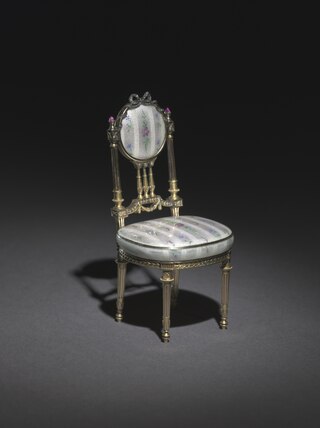
Miniature art includes paintings, engravings and sculptures that are very small; it has a long history that dates back to prehistory. The portrait miniature is the most common form in recent centuries, and from ancient times, engraved gems, often used as impression seals, and cylinder seals in various materials were very important. For example most surviving examples of figurative art from the Indus Valley civilization and in Minoan art are very small seals. Gothic boxwood miniatures are very small carvings in wood, used for rosary beads and the like.
Francis Dennis Ramsay, known as Dennis Ramsay, was a Scottish portrait painter, trained in London and Paris, who worked mainly in Australia in the classical tradition.

Lucas Horenbout, often called Hornebolte in England, was a Flemish artist who moved to England in the mid-1520s and worked there as "King's Painter" and court miniaturist to King Henry VIII from 1525 until his death. He was trained in the final phase of Netherlandish illuminated manuscript painting, in which his father Gerard was an important figure, and was the founding painter of the long and distinct English tradition of portrait miniature painting. He has been suggested as the Master of the Cast Shadow Workshop, who produced royal portraits on panel in the 1520s or 1530s.

Richard Crosse (1742–1810) was a leading English painter of portrait miniatures. He was a contemporary of John Smart, George Engleheart, Richard Cosway and William Wood.
Ursula Hoff was an Australian scholar and prolific author on art. She enjoyed a long career at the National Gallery of Victoria in Melbourne, where she was deputy director from 1968 to 1973. Her involvement then continued when she was appointed London Adviser of the Felton Bequest (1975–83), a major charitable foundation dedicated to the NGV.
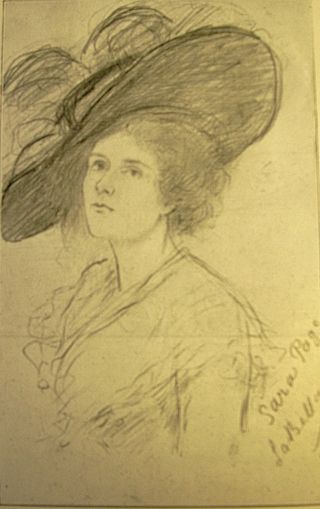
Sara Wells Page (1855–1943) was a British artist, portrait and figurative painter, of the Victorian and Edwardian period. During her lifetime she was widely exhibited at Parisian salons and British galleries, including the Royal Academy of Arts. Three of her paintings are in Wolverhampton Art Gallery.

Sampson Towgood Roch (1757–1847) was an Irish painter of miniatures.
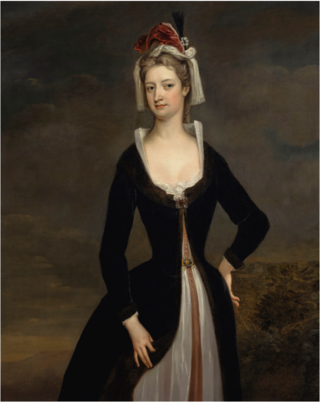
Mary Montagu, Duchess of Montagu, formerly Lady Mary Churchill, was a British court official and noble, the wife of John Montagu, 2nd Duke of Montagu. She was the youngest surviving daughter of John Churchill, 1st Duke of Marlborough, and his wife, Sarah.
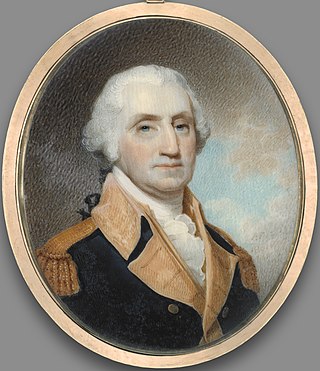
Robert Field (1769–1819) was a painter who was born in London and died in Kingston, Jamaica. According to art historian Daphne Foskett, author of A Dictionary of British Miniature Painters (1972), Field was "one of the best American miniaturists of his time." During Field's time in Nova Scotia at the beginning of the nineteenth century, he was the most professionally trained painter in present-day Canada. He worked in the conventional neo-classic portrait style of Henry Raeburn and Gilbert Stuart. His most famous works are two groups of miniatures of George Washington, commissioned by his wife Martha Washington.

Madeline Emily Green (1884–1947) was a British figurative artist, who exhibited at the Royal Academy, the Society of Women Artists, the Society of Graphic Art and at many other locations in Great Britain, and abroad.

Elizabeth May Norriss, later Bess Norriss Tait, was an Australian artist.
The Devonshire House Ball or the Devonshire House Fancy Dress Ball was an elaborate fancy dress ball, hosted by the Duke and Duchess of Devonshire, held on 2 July 1897 at Devonshire House in Piccadilly to celebrate the Diamond Jubilee of Queen Victoria. Due to the many prominent royals, aristocrats, and society figures who attended as well as the overall lavishness of the ball, it was considered the event of the 1897 London Season.
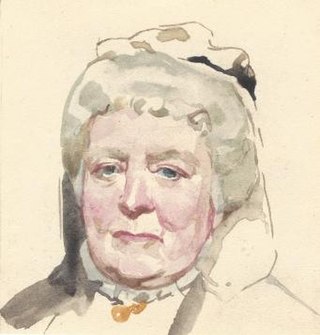
Mabel Lee Hankey was a British artist specialising in miniature portraits painted in watercolour.
Daphne Foskett was an English art connoisseur and art writer. She became interested in portrait miniatures while living in Edinburgh in the late 1950s and was encouraged to publish her research as her knowledge on the subject grew. Foskett published seven books and one exhibition catalogue during her career. She conducted lecture tours and was a contributor to some periodicals. Foskett's large photographic archive was sent to the Scottish National Portrait Gallery on a long-term loan in 2003 and her miniatures were catalogued in the same year.
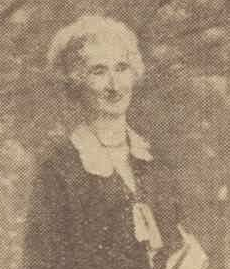
Ada Clara Whiting nee Cherry was an Australian oil and watercolour painter and miniaturist. She was active from 1898 to 1944, and received prestigious commissions to paint vice regal representatives, prominent members of society and celebrities, in Melbourne and later Sydney.















